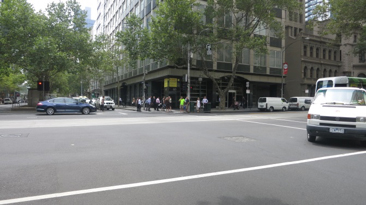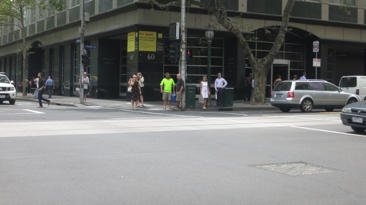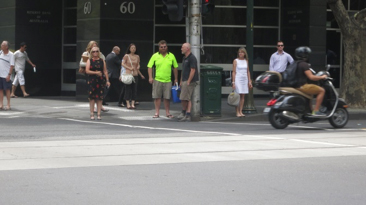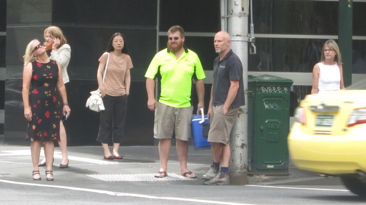CCTV: Getting started – What you need to know
 I have been advising on the use of CCTV for over 20 years and have seen the very best and very worst of CCTV over this time.
I have been advising on the use of CCTV for over 20 years and have seen the very best and very worst of CCTV over this time.
My view is that until you have a clear understanding of what CCTV can achieve in your environment, you should delay any buying decisions. This is because a very large proportion of all CCTV systems are so poor it is apparent they have been installed with little thought or any level of planning.
There are many reasons why business will decide to install CCTV. The most common one is to have a record of any incidents or events that occur in or around the work place. A digital record of an incident to be of real value should at least provide:
- An irrefutable account of what occurred
- Sufficient detail so that people involved can be identified if need be
This will seem really logical, but in reality it is much harder to achieve than it sounds. That is because we have no real understanding of when or where an incident will occur, under what circumstances it will occur and how many people may be involved. As a trade-off, the security industry has historically recommended equipment that covers all possible scenarios with the recorded imagery often suffering as a result.
For example, it’s common for CCTV cameras to come with a varifocal lens of 2.8mm to 8mm. If the lens is set at its widest setting (2.8mm) to maximise the field of view, a person needs to be within 3 metres of the camera to be easily identified. If the person was 20 metres from the camera, they would be quite difficult to distinguish at all.
What is easily misunderstood is the level of planning that often needs to go into a design to ensure the recorded imagery is of an appropriate standard. This is particularly true for enterprise applications where dozens or even hundreds of cameras could be required. What is deemed appropriate varies greatly between applications and the individual requirements of each client.
One of the key points to ensuring your CCTV system works effectively and in line with expectations is to work to a plan. Its deployment should always follow a strategic purpose or chances are you will be disappointed at some stage with the results you are going to achieve.
Australian Standards for CCTV are somewhat dated now and do not take into account the latest high-definition cameras that are fast becoming the benchmark standard. However, the basic design guidelines still hold true and if followed will go some way to ensuring the recorded video is of value when it comes time to review it.
There are the 4 base guidelines which the standard references of image capture which are:
Monitoring: The persons in the image are of sufficient size so that their movement can be detected by system operators. The images may be able to be used to place a person at the scene when used in conjunction with other camera views.
Observation: The persons in the image are of sufficient size so that their movements and actions can be observed and understood by system operators. System operators should be able to determine if the people are doing anything suspicious or inappropriate.
Recognition: The persons in the image are of sufficient size to be recognised by people who know them but may not be sufficient to be identified without someone recognising them.
Identification: The persons in the image are of sufficient size to be identified by unknown people and provide Police with evidentiary standard video. At this detail distinguishing features of vehicles such as number plates can also generally be captured.
|
|
|
|
|
|
One of the more common requests I get when designing CCTV systems for local councils will be to ensure coverage of a given intersection or a local hotspot. In the example imagery, I have included 4 images of a Melbourne CBD intersection, all of which would loosely follow the brief of providing coverage of this intersection.
So, which image best represents the needs of the client?
Potentially they all do and all don’t, depending on what the real expectations of the client are. If they just want to monitor the intersection for activity and to understand what occurred in the event of a car accident, either of the first two images could be entirely appropriate.
If they have a need to identify persons crossing at the intersection, then Recognition or Identification standard images is what they need to consider.
Understanding the expectations of the client is very important because it will have a significant impact on the final system design. Camera type, positioning and getting the lens selection right are just the first steps of a quite lengthy process. The list of factors that needs to be considered is extensive and many will not be aware of what all these considerations are.

This is a perfect example of the wrong camera being selected for this application. But with 4000 CCTV different cameras on the market in Australia, it happens often.
How CCTV is designed is consistent across every imaginable application. We start with the required outcomes of the client and work backwards from there. That may also sound illogical but if the key outcome of the client is identification standard video, then camera type, placement and lens selection are all driven by this one outcome.
In commercial buildings where the common areas can vary enormously, the purpose of each and every camera installed can often be different. This is where the concept of a CCTV strategy is so important to ensure that recorded video is consistently good and meets the needs of the strategy document.
For commercial buildings, typically just two levels of camera placements are required – Identification and Observation.
Identification Cameras
Every building in the country will have clearly defined points of entry. This is where we recommend the placement of Identification standard cameras. This is because everyone entering or exiting a building will pass through an opening that is typically 2 metres or less in width. This allows for every person to be recorded in the optimum position and ensures high quality imagery is always available.
If camera positioning throughout a building is planned correctly, identification standard imagery should only ever be required at the building entries and nowhere else. This simplifies the CCTV coverage requirements and means that Observation standard cameras are mostly only going to be required throughout the rest of the building.
Observation Cameras
Observation cameras are designed to provide overviews of larger areas and are ideal for anywhere where general surveillance is required.
If we refer back to the second example of our intersection images, there are a number of people waiting to cross at the lights. The lady with the black dress and blonde hair is easily distinguishable and with imagery of this standard, could be easily tracked if needed through any building based on video of this quality.
Anything more is perhaps not needed, because we would have captured her in much clearer detail the moment she walked in the front door of the building.





